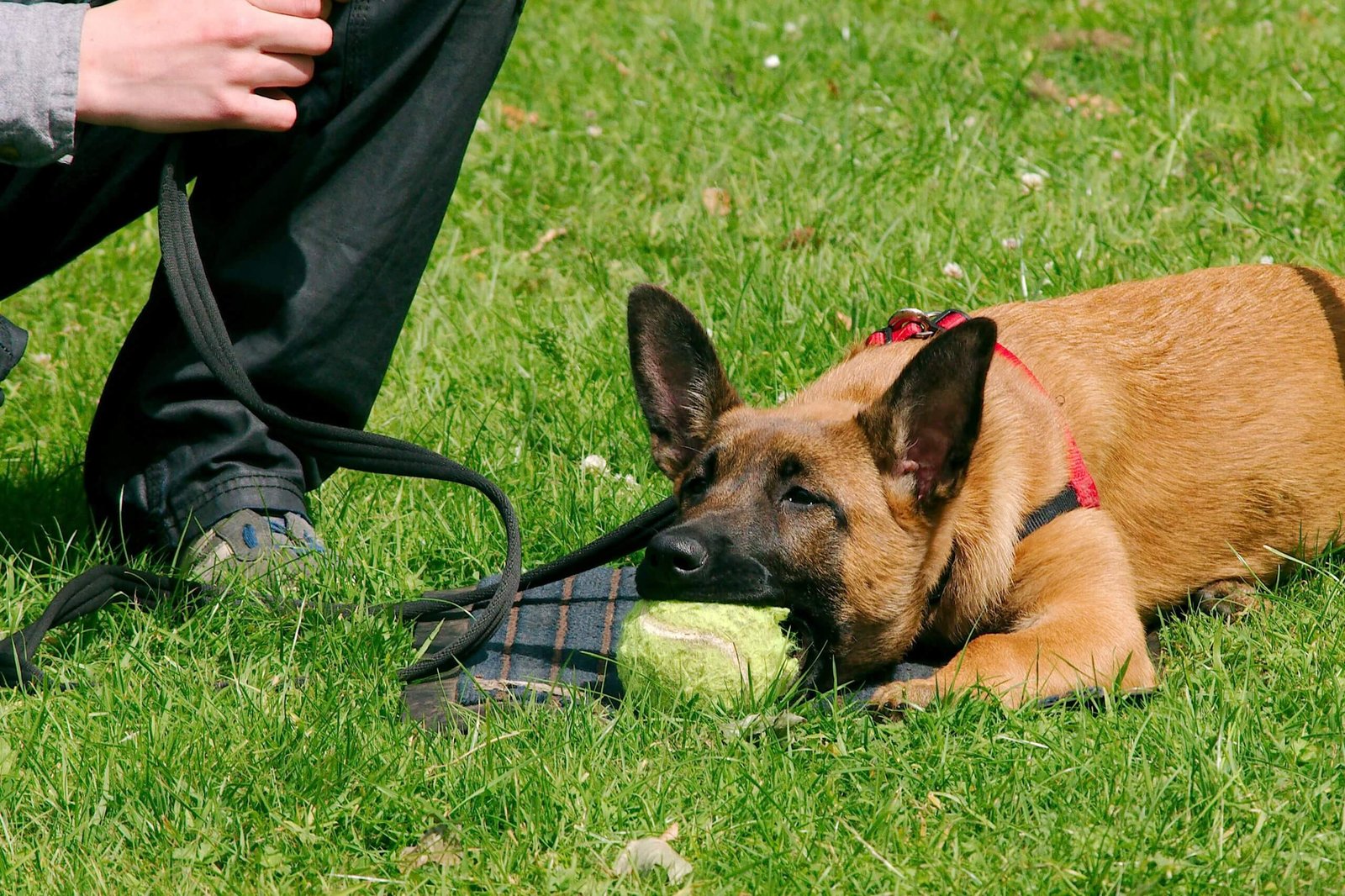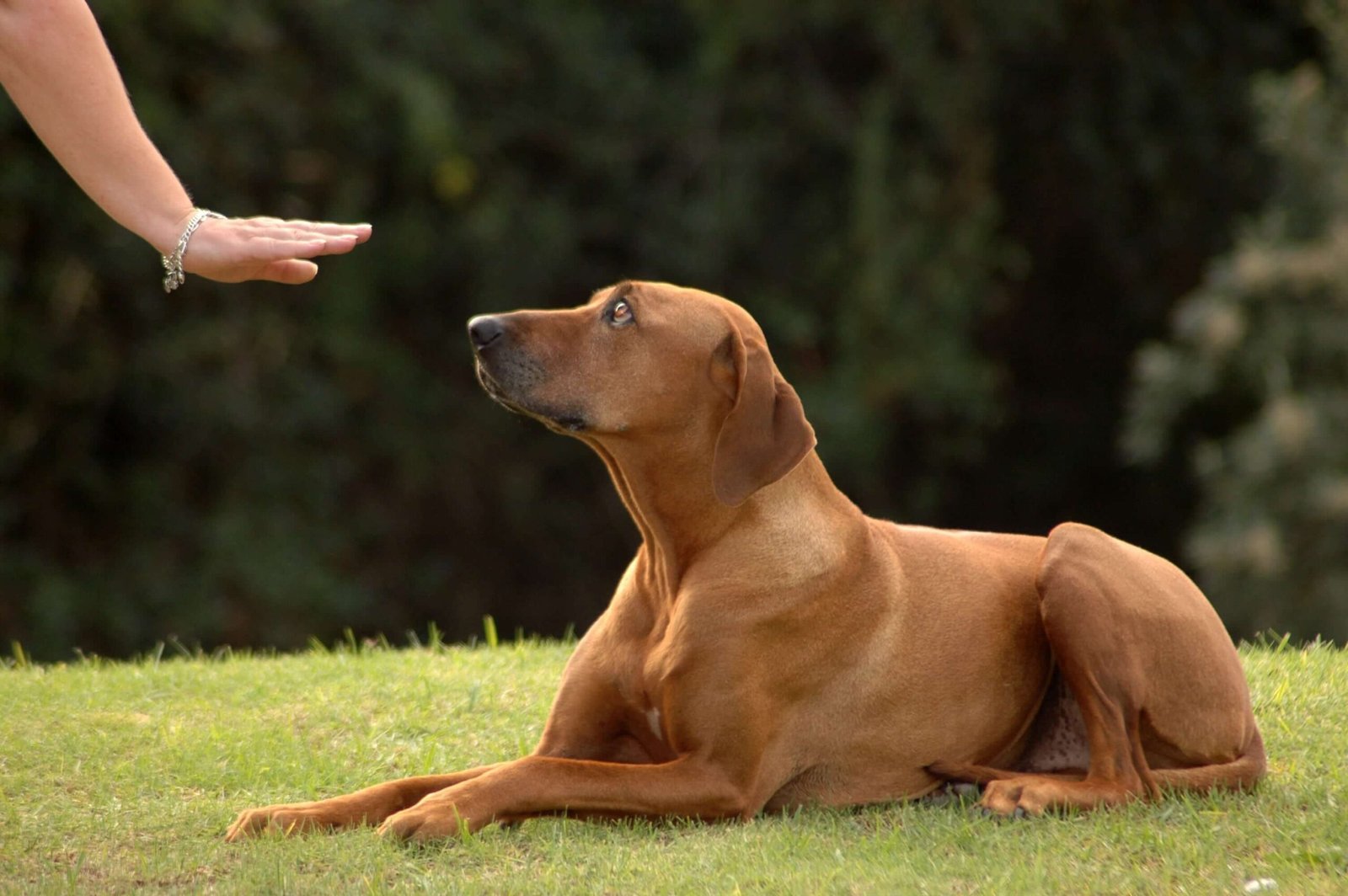How Should You Train Your Dog?
Dogs are amazing creatures, and they can also be a great responsibility. There are many ways to train your dog, but obedience training is one of the most popular. Obedience training is recommended for dogs of all ages, sizes, and temperaments.
Not only does this help them become more confident and enjoy more freedom from their owners, but it also helps strengthen the bond between humans and animals. In any dog owner’s life, it is essential to remember that consistency is critical when getting your dog on board with being a good citizen. Take Your Dog To A Friend’s House With YouOne of the best ways to get your dog to be a good citizen is to go on regular visits with you to friends or family members’ houses, even if it’s just for a few hours. This will give them the opportunity and sense of routine they need to adjust. Make sure you are also showing your dog where everything is before you leave so they know the rules once you get there.8 Ways To Keep Your Dogs Safe During A Storm Know What to Expect During a Storm If you are about to be in a storm for any length of time, make sure to take all necessary precautions and know what to do. Ensure your dog has enough Food and water, cover your windows with blankets or plastic so they won’t be hit by flying debris, and do this before the storm knocks out power or the electricity goes out.3 Ways To Encourage Your Dog to Eat When She Isn’t Hungry Your dog may not be hungry when you try to get her to eat, but that doesn’t mean she isn’t hungry. There are a few ways you can encourage your dog to eat when they aren’t hungry—including one extra unique trick from a few years ago.
Obedience training is a set of exercises that teach the dog everything from not barking to stay seated. The key to success is consistency and patience. You’ll want to start by teaching your pup the command “come.” Bring them over to the door and say, “Come!” If they obey, give them a treat. You may want to re-train them if they aren’t listening or following your commands, but it’s best to push only a little bit early on obedience training.
Making sure your dog behaves is essential to living in a household with a pet.
There are different methods for training your dog, but all the other ways have some common key points. Before you prepare your pup, it’s best to know those key points. Dogs are quick learners and almost always know how to do things better than humans. This means that they’re willing to do what you ask as long as they understand the command you give them, and they believe it will be worthwhile if there’s something in it for them at the end of the training session. The key points you’ll want to keep in mind when training your dog are:
- Only use positive reinforcement and reward your dog for good behavior. If you want your dog to stop jumping on people, don’t yell at them or hit them when they start jumping on someone. Instead, it would help if you showed them how rewarding it is for the people they’re jumping on by giving them a treat when they stop.
- Be patient with dogs and never push too hard. Remember that dogs learn at their own pace, and sometimes you may need to wait for them to get the idea before you try again.
- Keep your dog on a leash when outside in public places. If your dog is not on a leash, they may run into traffic, get hit by cars, or run away from you, which could lead them to be chased by police officers who could injure or kill your dog.
Understand How Your Dog Learns
It is essential to understand how dogs learn. There are many schools of thought and ideologies on dog and obedience training. This section provides an overview of what is currently being done in order to teach obedience.
Dogs are a part of the family, so it’s essential to understand how they learn best and what you can do to give them a good life. There are many ways that you can train your dog, but you must find out what works best for your dog and your situation first because every dog is different. If you’re looking for some ideas, below are a few training methods that have been proven to be effective. Positive Reinforcement Training – This is often the most effective way to train a dog and uses a reward system. You will use positive reinforcement to help teach your dog that good behavior gets them the thing they want. The two big things you’ll need for this are something your dog likes, like Food or praise, and an aversive (a word used to describe something unpleasant or painful), like a loud noise or pushing their head into the water.
Animal trainers use positive reinforcement and negative punishment to train animals. Understanding these principles goes a long way in understanding how you can teach your dog to behave. Positive reinforcement: Consists of giving a reward to an animal after it performs the desired behavior, such as Food or petting. Negative punishment: Consists of taking away something pleasant, like Food or attention, after the animal acts an undesired behavior.
A dog learns through associations and repetition. They learn from the people they live with. They learn from the environment in which they live, and often by watching other dogs do things. You can teach a dog tricks by praising them and using Food as a reward. It would help if you also tried to make your commands clear and make sure the dog understands what you want them to do. If there is one thing that all dogs have in common, it’s that each one has its personality. Dogs are individuals and have their likes and dislikes. For example, some dogs like to be around people more than other dogs, while some love the outdoors. Some other things to remember when training your dog: Never give a command when you’re angry or frustrated with your dog. It will work against you and make the situation worse. Always remain calm when training your dog so that they understand what is expected of them.” A well-trained domestic animal is the best friend an individual can have. This is because they will demand attention less than a dog and can be left alone for long periods. There are a variety of training techniques depending on the age, skill level, and temperament of your dog.
Dogs are not born knowing how to behave; they are taught how to behave by their owners.
Dogs also like a challenge, so providing them with a task is not just for their benefit but also for yours. It will get them out of your hair, it will make them feel more important than before, and it will give you back some time in your day with fewer hassles.

Obedience Training Rewards
The motivation of a dog to obey commands is dependent on the reward they get.
Rewards can be anything that gives them an enjoyable sensation or experience, such as petting on the head, scratching under the chin, or feeding them their favorite Food. The dog learns that when they obey a command it will lead to this pleasurable experience and thus learns to obey the order. For example, when your dog follows a command such as “sit” or “stay,” you can reward them with petting or with a treat. Another reward is for a dog to be praised and given pleasure. When you honor your dog, you give them positive reinforcement, encouraging them to obey commands. At all times, make sure that the reward is something appropriate for the order given.
The benefits of obedience training your dog are numerous. They include the development of a stronger bond between the dog and its owner, a reduced likelihood of behavioral problems, and increased safety for both the person and the dog in public spaces. The process can sometimes be daunting, however, so owners may not always be able to give it their full attention which is why an obedience rewards program can be so helpful. There are many different rewards that you can use to train your dog as long as they do not have adverse effects on your pet. Some popular ones are praise, verbal encouragement, or treats. A small stuffed animal is one of the more popular rewards used in obedience reward programs. Recognition and verbal praise are easiest to implement for dogs because they tend to be more receptive than other types of rewards. Credit can be given regularly in the form of words or phrases like “Good boy!” or “Great job!” It is also helpful to use their name as often as possible so that it becomes the dog’s label for good behavior.
To train your dog, you need to provide a reward. Different rewards can be used based on the training method. Rewards for obedience training can be anything from Food to toys or treats. However, Food has many disadvantages as a reward for obedience training. Food can be a motivation for your dog to continue the session, and therefore, you need to avoid giving too much Food as it will make your training sessions longer. Another disadvantage of Food is that it must be included due to the salivating and begging. Toys and treats are more suitable as rewards. They can be left out just like Food. Rewards should be presented immediately after the session rather than at the end of the session or when you have already achieved your goal because this will make your dog act according to habit rather than what they know is right.
Control Consequences Effectively
An obedient dog is a happy dog. It’s important for the owner to know how to train their dog properly and effectively. There are a few basic things that need to be established first, like who is the pack leader, who has control over all of the Food and snacks in the house, appointing authority over every member of your household as well as your dog, and then how you are going to train them with obedience training methods. In order to show appropriate authority, the owner should have a good understanding of every individual’s natural rank in the family. In many cases, this is dictated by age. For example, a child who has grown up without any training would be lower than an older sibling or parent. The dog would not get to eat first if that were the case. It’s also essential to determine whether they are dominant or submissive in personality and establish what that means for their training. When it comes to exercise, a submissive nature will require more guidance and structure but also, a lot of patience. Dogs with dominant personalities need to be given clear boundaries to know what is expected of them.
Using aversive stimuli or the infliction of pain and physical discomfort is one way to train your dog for obedience.
This is quite controversial because it does not always work and can adversely affect the animal. Aversive stimuli bring about consequences that are only sometimes as desired. This may include extra barking, chewing, and digging. It may even lead to aggression or fear-related behaviors. It also has an emotional impact on the animal, leading to fear or anxiety. It affects their trust in people, which may be especially apparent with children dogs trained using this method, who are more likely to feel anxious around strangers afterward. The use of aversives is controversial. It does not always bring about the consequences that are desired and can result in adverse effects on the animal, such as barking, chewing, digging, and aggression. It also impacts the animal’s trust in people, which may be especially apparent with dogs trained using this method, who may feel anxious around strangers afterward.
Wouldn’t it be better if we could teach our animals without having them endure pain? So there are many new methods that are being developed that focus on positive reinforcement instead of punishment, like clicker training and positive punishment training. Positive reinforcement training is a type of animal training where the trainer uses a reward to motivate the animal to act. There are many different ways to use tips, but the idea behind them is that they inspire or encourage animals to learn new behaviors and stay motivated. This training has been successful with dogs, cats, horses, and pigs. Positive punishment training is when an animal is uncomfortable or in pain for a certain behavior, like barking excessively. When this type of training is tried with corgis, it has proven successful with dogs who are easily trained. After the first book was released in November 2011, several stories of people’s experiences with corgis were published in the media. In April 2012, a “New York Times” reporter interviewed a woman who had adopted a corgi from the local pound and had to give it up because she could not provide for its needs. The reporter also spoke to another woman.

Basic Obedience Dog Training
It is essential to be clear and consistent in training your dog. Keep your expectations realistic, and keep your pup manageable with a manageable amount of rules.
Regarding training dogs, there is a lot of information available on the internet (some conflicting). The key to successful dog training is consistency, patience, and a high level of positive reinforcement. The first step in basic obedience dog training is getting on the same page with the owner by helping them set goals for their pup. Next, owners should establish boundaries and set up reminders that will help keep their pup on track. Finally, owners should use positive reinforcement techniques when their puppy does something right! 1. Establish Goals. When working with your dog, it’s essential to know what they would like you to do. For example, if your dog has no accidents in the house and obeys commands, set a goal of walking without using their leash. Suppose your dog is clingy towards you or jumps up on you when greeting people. Set a goal of getting them to sit before they get too close and then reward them with praise or affection when they’ve done so. In general, set a goal for your dog related to what you want them to learn.
Every dog needs to be trained to become a responsible family member. This is as true for any other pet as it is for dogs. Dogs need training to avoid misbehaving and learn good manners. Exercise also helps the dog get used to the house and its inhabitants, socialize with them and feel safe in their new environment. Training a dog requires patience and consistency, but in the end, your efforts will be rewarded. All dogs can be taught—even those deemed too tricky by others—if you are willing to put in the time, interest, and effort. Training a puppy A young, growing dog is more trainable than an older one. As they age, dogs often become less eager to please, so preparing a mature dog may take more time and patience. It’s important to remember that the training process will end up being much shorter if you start this early in the dog’s life and continue it for several years. Start small with your new puppy by teaching basic commands such as sit and stay and gradually work your way up to more advanced training. The Advantages of Training Your DogDog training is an essential part of bonding with your pet and has many health benefits for you and your dog. A well-trained dog will be safer in the home and can avoid dangerous situations with other animals or people by responding appropriately to commands. In addition, a well-trained dog will have a longer life expectancy due to its obedience skills, which means less expensive vet bills. Dogs can also provide companionship, mainly when they can be around humans in their environment and not simply in social settings if they are correctly trained. This is especially helpful for people who live alone or have little downtime during the day. People who have never had a dog before should seek out an experienced trainer or behaviorist before starting this project since they may not know what they are doing otherwise.
Training a dog can be challenging to do. There are a lot of factors that can come into play – environment, personality, and more. But one of the most essential things for obedience training is consistency.
Some new owners may need to be made aware of what obedience training entails and how it differs from other types of dog training to train a dog using an obedience collar properly, as they need to understand and remember the different commands they need to use. This guide will cover the basics and tips on choosing an appropriate leash, collar, and harness for your furry friend.



